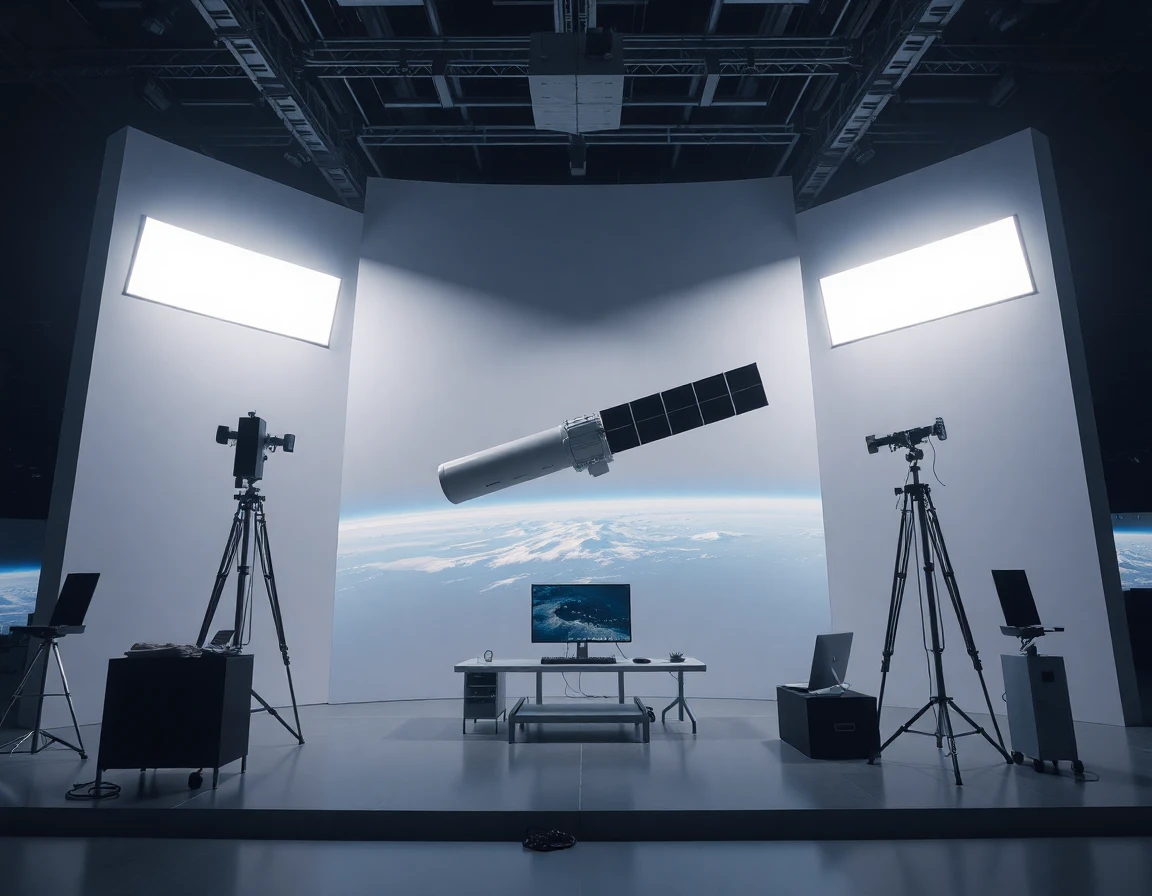Recent advancements in the satellite sector highlight a transformative period for aerospace, defense, and technology industries. With significant developments in satellite launches, Earth observation capabilities, and connectivity solutions, the landscape is shifting rapidly. This article delves into the latest milestones and technological innovations shaping the future of satellites.
SpaceX’s Launch Cadence and Rocket Reusability
On September 2-3, 2025, SpaceX showcased its prowess in the aerospace sector by executing two Falcon 9 launches within a 24-hour timeframe. During these missions, 24 Starlink internet satellites were deployed into polar orbit from Vandenberg Space Force Base in California. Remarkably, this operation utilized a brand-new first stage booster, a rare occurrence given SpaceX’s commitment to reusability. This booster marked only the seventh new Falcon 9 introduced during over 100 launches this year.
The successful landing of the booster on the droneship Of Course I Still Love You approximately 8.5 minutes post-launch further solidified SpaceX’s Falcon 9 as the most reliable rocket in history, boasting an impressive total of 109 flights in 2025 and 498 booster landings overall. This high launch cadence not only emphasizes the rocket’s reliability but also its critical role in enhancing global satellite internet connectivity through the Starlink constellation.
NASA’s Leap into Commercial Weather Satellites
NASA is at the forefront of innovation with its TROPICS mission, which has pioneered a compact atmospheric sounder now deployed on commercial small satellites. This technology allows for more frequent and accurate weather data collection, with a fleet of 18 CubeSats capable of revisiting locations every 40-45 minutes. By improving short-term weather forecasts, NASA’s initiative demonstrates a successful transfer of government-developed technology to the commercial sector.
Companies like Tomorrow.io have been selected under NASA’s Commercial SmallSat Data Acquisition program to leverage this advanced weather-sensing technology. This collaboration not only accelerates innovation but also enhances the affordability of satellite weather monitoring systems, ultimately benefiting industries reliant on precise weather data, such as agriculture and transportation.
Strengthening European Defense Capabilities with SAR Satellites
In response to rising geopolitical tensions, European nations are rapidly enhancing their defense capabilities through the acquisition of synthetic aperture radar (SAR) satellites. One key player, Finland-based Iceye, operates a fleet of 54 SAR satellites and has recently secured contracts with multiple European armed forces, including the Polish Armed Forces and the Portuguese Air Force.
Iceye’s expansion reflects a strategic initiative to close defense technology gaps by leveraging innovative new space firms rather than traditional primes. The establishment of new manufacturing facilities in Germany, Greece, and Portugal further underscores Europe’s commitment to bolstering its defense infrastructure through advanced satellite technology.
Australia’s Gilmour Space Achieves Satellite Milestone
Gilmour Space Technologies marked a significant milestone with the successful operation of its 100-kg ElaraSat MMS-1 satellite, launched in June 2025 aboard SpaceX’s Transporter-14 mission. Equipped with a hyperspectral imager from Australia’s Commonwealth Scientific and Industrial Research Organisation (CSIRO), the satellite has completed commissioning and system verification, indicating reliable communications.
Gilmour’s modular satellite bus is designed to support payloads of up to 30 kg and is compatible with various launch vehicles, including Gilmour’s own Eris rocket. This achievement not only enhances Australia’s sovereign satellite capabilities but also represents a critical step forward in the nation’s space access initiatives.
Integrating Satellite Connectivity into Wearables
In a notable collaboration, Skylo has expanded its partnership with Garmin to integrate satellite connectivity into the popular fēnix 8 Pro smartwatches, which began shipping on September 8, 2025. This innovative service enables 24/7 emergency monitoring and global rescue coordination without the need for additional hardware, utilizing existing chipsets within consumer devices.
Skylo’s adoption of 3GPP open standards allows for scalable satellite connectivity across 36 countries, marking a significant shift from proprietary satellite hardware to integrated consumer experiences. This development highlights the growing trend of incorporating advanced satellite technologies into everyday devices, enhancing safety and connectivity for consumers.
Conclusion
As the satellite industry continues to evolve, these recent developments signify a promising future for aerospace, defense, and technology sectors. The rapid pace of satellite launches, advancements in weather monitoring, and innovative integrations in consumer technology reflect a broader trend towards enhanced capabilities and accessibility. Moving forward, the collaboration among governmental and commercial entities will be crucial in driving further innovations and addressing the challenges posed by an increasingly complex global landscape.
References
-
Top Satellite & Space Developments (Sept. 2–3, 2025) (ts2.tech) - 9/3/2025 SpaceX Launch Doubleheader: SpaceX launched two Falcon 9 missions in under 24 hours, one from California late Sept. 2 carrying 24 Starlink …
-
Skylo expands collaboration with Garmin to bring satellite … (news.satnews.com) - 9/3/2025 Skylo expands collaboration with Garmin to bring satellite connectivity to new smartwatches. September 3, 2025. Share. Share on Facebook. Share. Share this.
-
Tech From NASA’s Hurricane-hunting TROPICS Flies on … (www.nasa.gov) - 9/2/2025 TROPICS pioneered a novel, compact atmospheric sound now flying aboard a fleet of commercial small satellites created by the weather technology …
-
Gilmour Space achieves milestone with Australian satellite … (news.satnews.com) - 9/2/2025 Gilmour Space Technologies today confirmed the successful in-orbit operation of its 100-kilogram satellite platform, ElaraSat MMS-1 …
-
Can New Space Firms Plug Europe’s Gap in Defense Tech? (interactive.satellitetoday.com) - 8/25/2025 A host of European nations have ordered synthetic aperture radar (SAR) satellites including the Polish Armed Forces, the Portuguese Air Force, …



